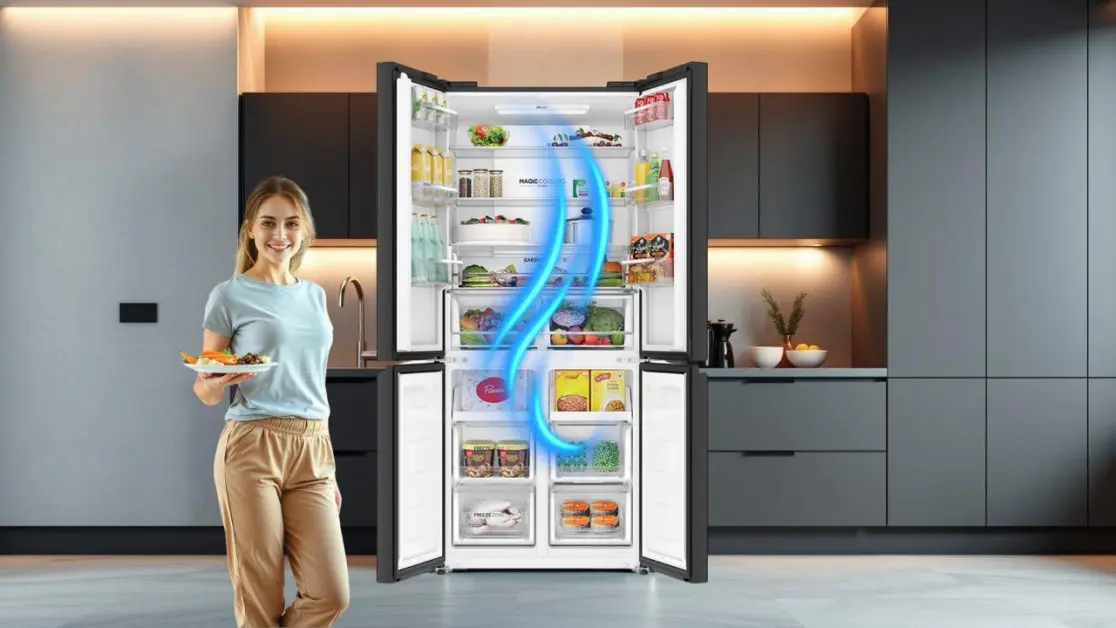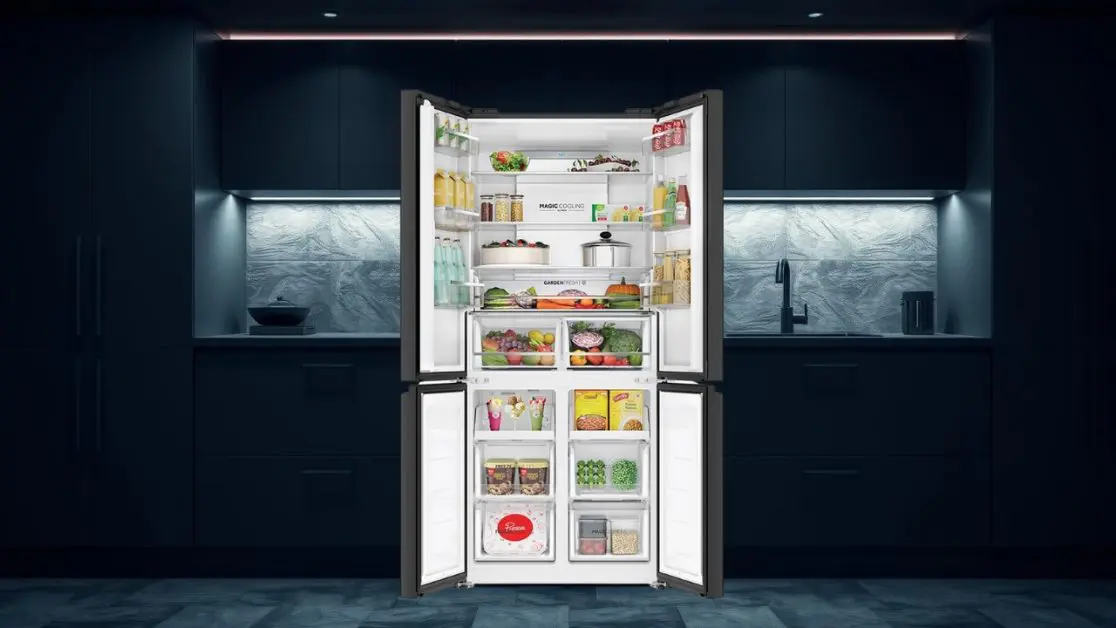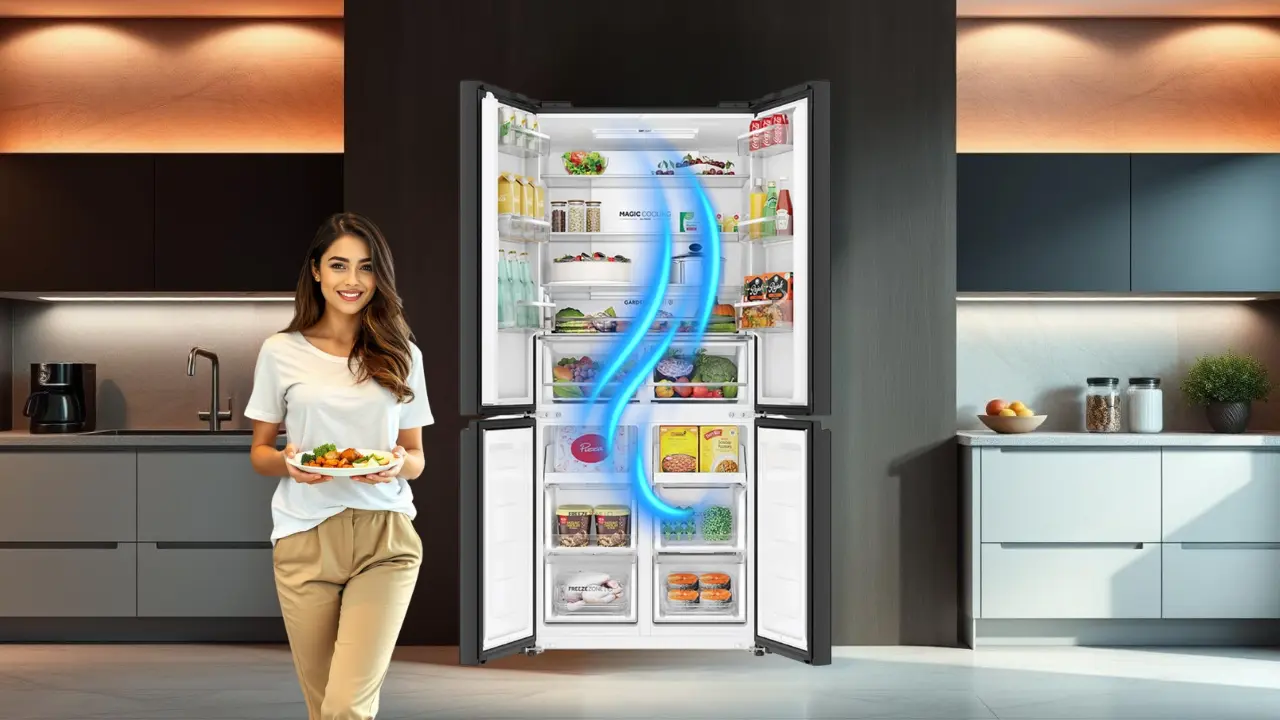You open your refrigerator, expecting that lovely, refreshing chill, But wait! The milk up top is icy cold, while down in the veggie drawer, your lettuce looks like it’s waving a white flag.
Sounds familiar?
It’s super annoying when your fridge has hot and cold spots, right? That uneven cooling is a sneaky cause of food going bad way too fast, which nobody wants!
Luckily, this problem is dealt with easily in modern refrigerators through multiple airflow vents. These little guys are like tiny AC units inside your fridge, working hard to spread the cool air evenly.
Knowing how they work and why they’re so great can really help you pick the perfect refrigerator – one that keeps your food fresher for longer and saves you from tossing out spoiled groceries. Let’s dive in!
The Science Behind Refrigerator Cooling

Refrigerators operate on the principle of heat removal. A refrigerant circulates through coils, absorbing heat from the interior compartments and releasing it externally. This process lowers the internal temperature, preserving perishable items. However, merely lowering the temperature isn’t sufficient; the cooled air must be evenly distributed to prevent hotspots and ensure all stored items receive adequate cooling.
Importance of Even Air Distribution
Uneven cooling can result in certain areas of the refrigerator being colder than others. For instance, items placed near the cooling vents might freeze, while those farther away may remain inadequately chilled. Such temperature disparities can compromise food safety and quality. Therefore, achieving uniform air distribution is crucial for optimal refrigerator performance.
Multiple Airflow Vents: How They Work

To address the challenge of even cooling, many modern refrigerators incorporate multiple airflow vents strategically positioned throughout the interior. These vents facilitate the circulation of cold air to every corner of the appliance. When the refrigerator’s compressor operates, fans push cold air through these vents, ensuring that each shelf and compartment receives a consistent flow of chilled air.
Components Involved
- Fans: These are responsible for propelling the cold air generated by the evaporator coils into the refrigerator’s compartments.
- Vents: Strategically placed openings that direct the flow of cold air throughout the refrigerator, ensuring comprehensive coverage.
- Sensors and Controls: Modern refrigerators are equipped with sensors that monitor internal temperatures and adjust fan speeds and airflow accordingly to maintain optimal conditions.
https://youtu.be/G3A4RnBbF_0?si=1I5sjmnuZo1hpn_5
Benefits of Multiple Airflow Vents
1. Uniform Cooling
By distributing cold air evenly, multiple vents prevent the formation of hotspots and cold zones. This uniformity ensures that all food items, regardless of their placement, are stored at consistent temperatures, thereby extending their shelf life.
2. Faster Temperature Recovery
Every time the refrigerator door is opened, warm air enters, causing internal temperatures to rise. Multiple airflow vents facilitate quicker restoration of the set temperature by efficiently circulating cold air, thus preserving food quality.
3. Energy Efficiency
Efficient air distribution means the refrigerator doesn’t have to work as hard to maintain the desired temperature. This reduced workload translates to lower energy consumption and, consequently, decreased electricity bills.
4. Reduced Odor Transfer
Consistent airflow helps minimize the mingling of odors between different compartments. For example, the smell of strong cheeses is less likely to affect other food items when air circulates properly.
Considerations for Optimal Performance

While multiple airflow vents significantly enhance cooling efficiency, certain user practices can further optimize refrigerator performance:
- Avoid Overcrowding: Overloading the refrigerator can obstruct vents and impede air circulation. Ensuring adequate space between items allows for better airflow and more consistent cooling.
- Proper Vent Maintenance: Regularly check and clean the vents to prevent blockages caused by food particles or ice buildup. Unobstructed vents are essential for optimal air distribution.
- Strategic Food Placement: Place temperature-sensitive items, such as dairy products and meats, in areas where airflow is strongest, typically near the vents. Less sensitive items can be stored in other sections.
Technological Innovations Enhancing Airflow
Advancements in refrigeration technology have led to the development of systems that further improve air distribution:
- Multi-Zone Air Cooling Systems: These systems circulate air evenly throughout the refrigerator from multiple vents, ensuring a consistent temperature from corner to corner. This technology helps maintain the quality and freshness of stored food items.
- Dual Fan Technology: Some models feature separate fans for the refrigerator and freezer compartments, allowing for independent airflow control. This design ensures that each section maintains its optimal temperature without affecting the other.
Conclusion
The incorporation of multiple airflow vents in refrigerators represents a significant advancement in food preservation technology. By ensuring uniform cooling, facilitating rapid temperature recovery, enhancing energy efficiency, and reducing odor transfer, these systems address common challenges associated with food storage. For consumers seeking reliable and efficient refrigeration solutions, understanding the role of airflow vents is crucial.
Haier India offers a range of refrigerators equipped with advanced airflow technologies designed to keep your food fresher for longer. Explore their collection to find a model that suits your needs and experience the benefits of innovative cooling solutions.

